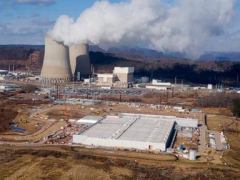Marissa Loewen first started using artificial intelligence in 2014 as a project management tool. She has autism and ADHD and said it helped immensely with organizing her thoughts.
“We try to use it conscientiously though because we do realize that there is an impact on the environment,” she said.
Her personal AI use isn’t unique anymore. Now it’s a feature in smartphones, search engines, word processors and email services. Every time someone uses AI, it uses energy that is often generated by fossil fuels. That releases greenhouse gases into the atmosphere and contributes to climate change.
And it’s getting harder to live without it.
AI is largely powered by data centers that field queries, store data and deploy information. As AI becomes ubiquitous, the power demand for data centers increases, leading to grid reliability problems for people living nearby.
“Since we are trying to build data centers at a pace where we cannot integrate more renewable energy resources into the grid, most of the new data centers are being powered by fossil fuels,” said Noman Bashir, computing and climate impact fellow with MIT’s Climate and Sustainability Consortium.
The data centers also generate heat, so they rely on fresh water to stay cool. Larger centers can consume up to 5 million gallons (18.9 million liters) a day, according to an article from the Environmental and Energy Study Institute. That’s roughly the same as the daily water demand for a town of up to 50,000 people.
It’s difficult to imagine, because for most users the impact isn’t visible, said AI and Climate Lead Sasha Luccioni with the AI company, Hugging Face.
“In one of my studies, we found that generating a high-definition image uses as much energy as charging half of your phone. And people were like, ‘That can’t be right, because when I use Midjourney (a generative AI program), my phone battery doesn’t go down,’” she said.
Jon Ippolito, professor of new media at the University of Maine, said tech companies are constantly working to make chips and data centers more efficient, but that does not mean AI’s environmental impact will shrink. That’s because of a problem called the Jevons Paradox.
“The cheaper resources get, the more we tend to use them anyway,” he said. When cars replaced horses, he said, commute times didn’t shrink. We just traveled farther.
How much those programs contribute to global warming de





